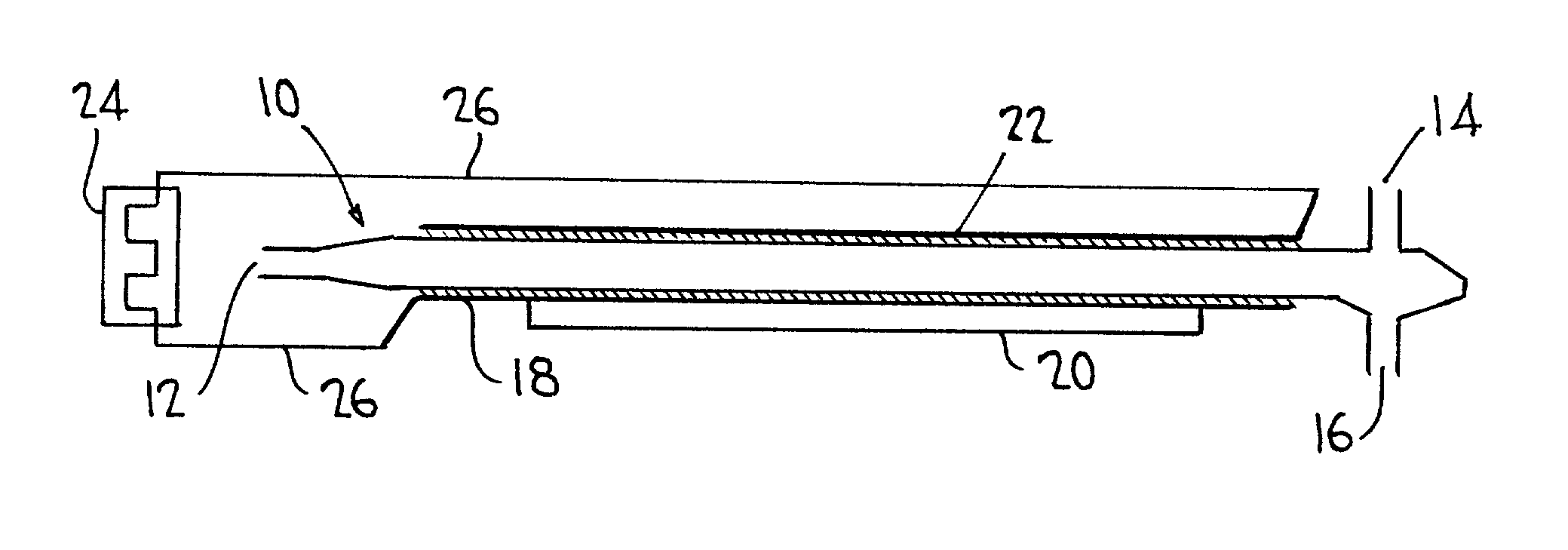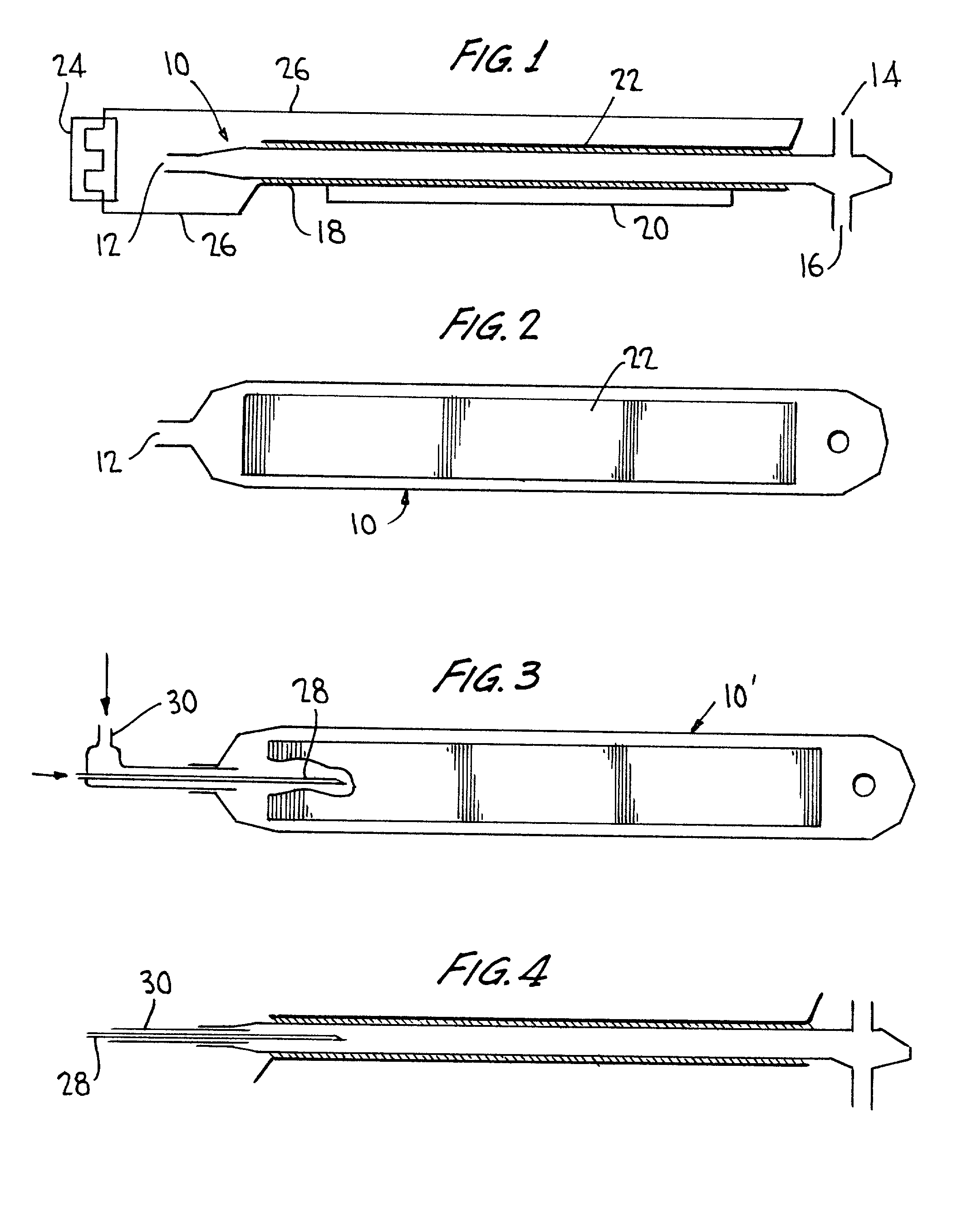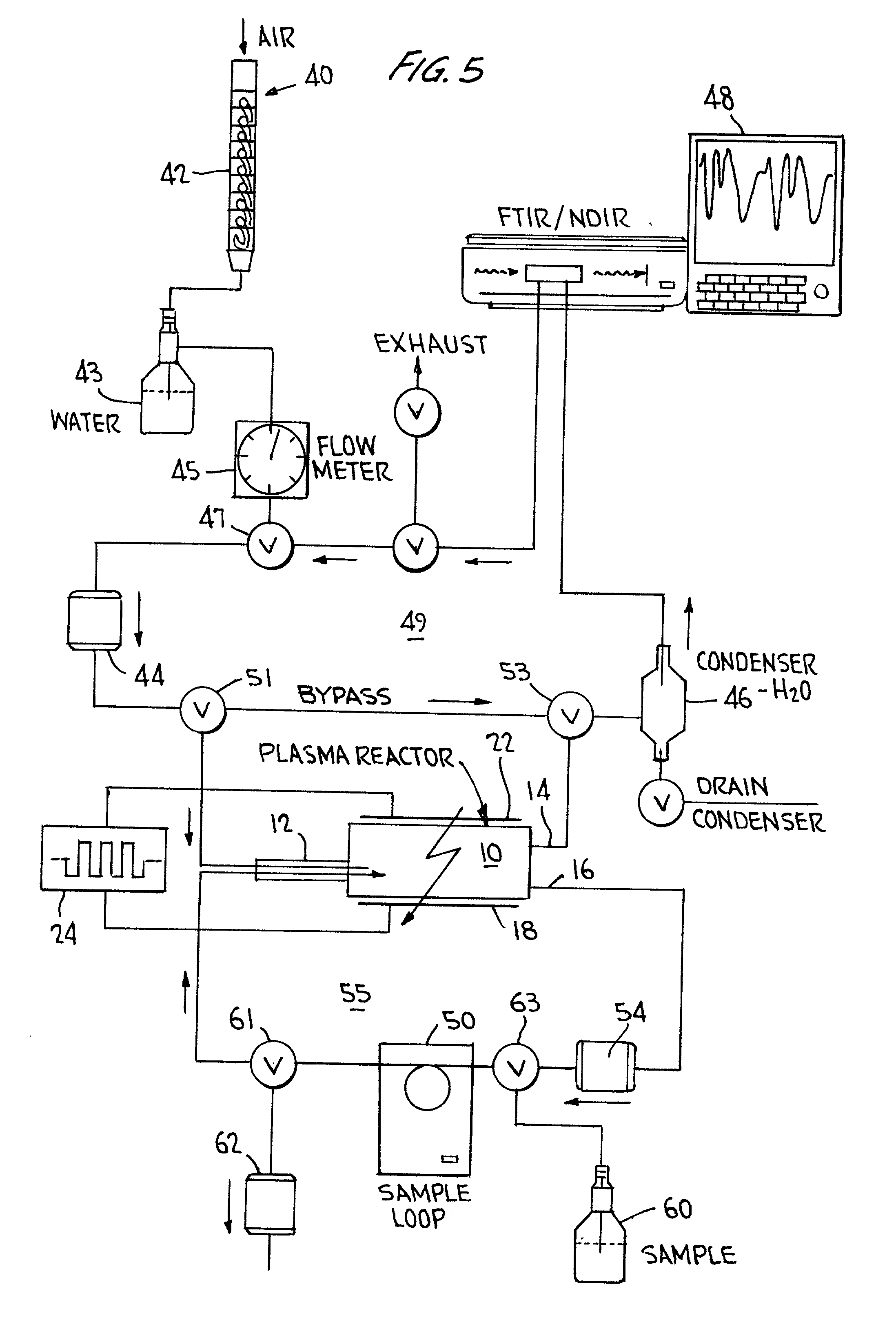Wide-range TOC instrument using plasma oxidation
a plasma oxidation and wide-range technology, applied in instruments, material analysis using wave/particle radiation, chemical methods analysis, etc., can solve the problems of increasing complexity of technique, limiting analytical techniques to non-contact optical techniques, and complex analysis of samples with higher co.sub.2 content, etc., to achieve short time and increase the efficiency of instruments
- Summary
- Abstract
- Description
- Claims
- Application Information
AI Technical Summary
Benefits of technology
Problems solved by technology
Method used
Image
Examples
embodiment 10
[0029] As noted above, the cell 10 in the embodiment of FIGS. 1 and 2 has a single inlet port 12, and is employed where a gaseous sample, e.g., a gaseous mixture of volatile organics, possibly including water vapor, and oxidant gas are mixed prior to supply to the cell. The otherwise similar embodiment 10 of FIGS. 3 and 4 is used where a liquid sample is to be subjected to plasma oxidation. In the liquid case, it is critical for achieving fast and complete oxidation to form a thin and even film of the sample liquid on the inner glass surface. In the design of FIGS. 3 and 4, the liquid sample is sprayed through the capillary 28 onto the bottom glass surface with sufficient hydraulic pressure, i.e. by means of a sample pump, to achieve a thin and uniform film of the sample liquid on the inside surface of the cell. In this case, the oxidant gas is introduced through a separate inlet port 30, concentric with tube 28, so that the sample and the oxygen containing gas are combined in the c...
first embodiment
[0030] More specifically, FIGS. 1 and 2 represent the plasma cell 10, suitable for the determination of TOC in gaseous samples. For example, the apparatus could be employed as a "Breathalyzer" for the measurement of alcohol in one's bloodstream as follows, with reference to FIG. 5, discussed further below. Imagine a gaseous sample of ethanol (e.g., the ethanol contained in one's breath after a couple of beers) in the sample flask 60. Ethanol is a volatile organic compound. Pump 62 would draw the gas to be tested (i.e., a breath sample) through the sample loop 50. Pump 62 is then turned off and pump 54 is turned on, transferring the content of the sample loop 50 through inlet port 12 into the plasma cell 10. The oxidant gas is recirculated through the gas loop 49 containing pump 44, condenser 46 and detector 48. CO.sub.2 which is contained in the sample before the plasma oxidation can either be removed prior to oxidation, or the existing CO.sub.2 contained in the sample may be measur...
PUM
| Property | Measurement | Unit |
|---|---|---|
| temperature | aaaaa | aaaaa |
| temperature | aaaaa | aaaaa |
| temperature | aaaaa | aaaaa |
Abstract
Description
Claims
Application Information
 Login to View More
Login to View More - R&D
- Intellectual Property
- Life Sciences
- Materials
- Tech Scout
- Unparalleled Data Quality
- Higher Quality Content
- 60% Fewer Hallucinations
Browse by: Latest US Patents, China's latest patents, Technical Efficacy Thesaurus, Application Domain, Technology Topic, Popular Technical Reports.
© 2025 PatSnap. All rights reserved.Legal|Privacy policy|Modern Slavery Act Transparency Statement|Sitemap|About US| Contact US: help@patsnap.com



